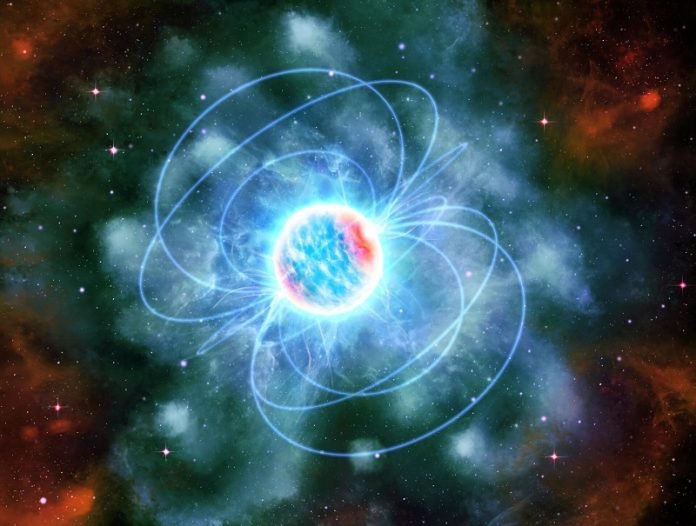
Scientists have found three young neutron stars that are surprisingly cold for their age, using data from ESA’s XMM-Newton and NASA’s Chandra spacecraft.
These unusual findings challenge many existing models of neutron stars, narrowing down the possible explanations for how these stars behave. This breakthrough could help us understand the fundamental laws of the universe better.
The research was published in the journal Nature Astronomy.
What Are Neutron Stars?
Neutron stars are incredibly dense objects formed from the remnants of massive stars that exploded in supernovas.
After a star uses up its fuel, its core collapses under gravity, while the outer layers are ejected into space. The core becomes a neutron star, where matter is squeezed to extreme densities.
Inside a neutron star, the pressure is so intense that even atoms collapse, turning protons and electrons into neutrons. Some theories suggest that even more exotic particles might form, or that particles could merge into a dense soup of their basic components, called quarks.
Scientists use theoretical models, known as equations of state, to describe the physical processes inside neutron stars. However, with hundreds of potential models, it’s still unclear which one accurately describes these stars’ behavior. All neutron stars, regardless of their unique properties, must follow the same fundamental equation of state.
The Cold Neutron Stars
By examining data from the XMM-Newton and Chandra missions, scientists found three neutron stars that are much colder than others of the same age. These stars are 10 to 100 times colder than their peers. By comparing the observed cooling rates with different models, researchers found that these cold stars rule out about 75% of the proposed equations of state.
“The young age and the cold surface temperature of these three neutron stars can only be explained by a fast cooling mechanism,” explains astrophysicist Nanda Rea, who led the study at the Institute of Space Sciences (ICE-CSIC) and the Institute of Space Studies of Catalonia (IEEC). “This allows us to exclude a significant portion of the possible models.”
Understanding the correct equation of state for neutron stars has significant implications for physics.
It can help bridge the gap between general relativity (which describes gravity on large scales) and quantum mechanics (which explains particle-level interactions). Neutron stars are ideal for studying this because of their extreme densities and gravitational forces, far beyond what we can recreate on Earth.
Detecting these unusually cold neutron stars was challenging. They are too dim for most X-ray observatories to see, but the sensitivity of XMM-Newton and Chandra made it possible.
“The superb sensitivity of XMM-Newton and Chandra allowed us to detect these neutron stars and gather enough data to determine their temperatures and other properties,” says Camille Diez, an ESA research fellow.
The research team, led by Nanda Rea, included experts with different skills. Alessio Marino focused on determining the physical properties of the neutron stars, using X-ray emissions to deduce their temperatures and the surrounding supernova remnants to estimate their ages.
Clara Dehman calculated “cooling curves” for different equations of state, predicting how a neutron star’s brightness (related to its temperature) changes over time. Finally, Konstantinos Kovlakas used machine learning to analyze how well these cooling curves matched the observed properties of the cold neutron stars.
Their statistical analysis showed that models without a fast cooling mechanism couldn’t explain the data. “Neutron star research spans many scientific fields, from particle physics to gravitational waves,” Nanda Rea concludes. “This work’s success shows how important teamwork is to advancing our understanding of the universe.”
This discovery brings us a step closer to uncovering the true equation of state for neutron stars, offering new insights into the fundamental laws that govern the universe.



